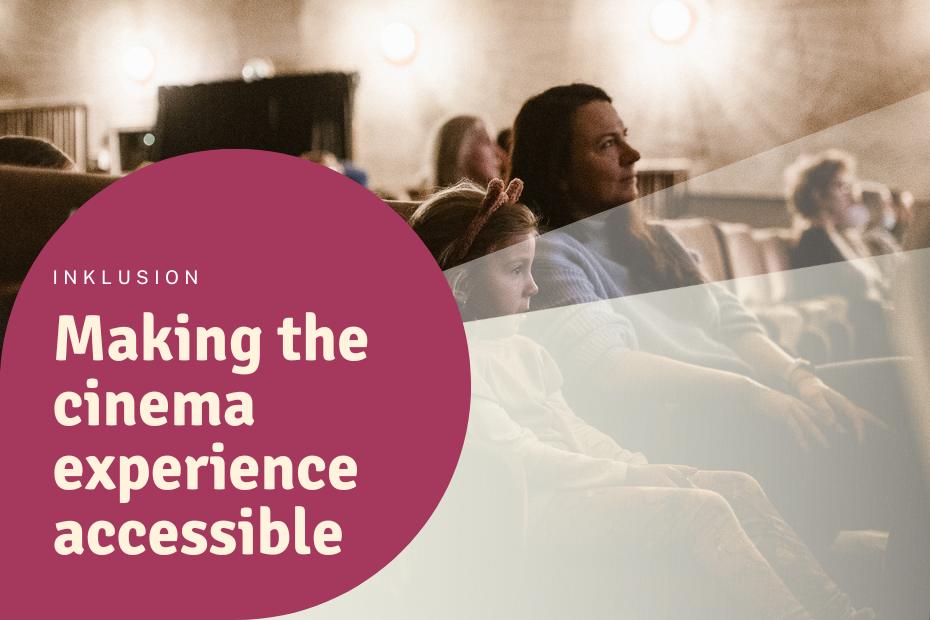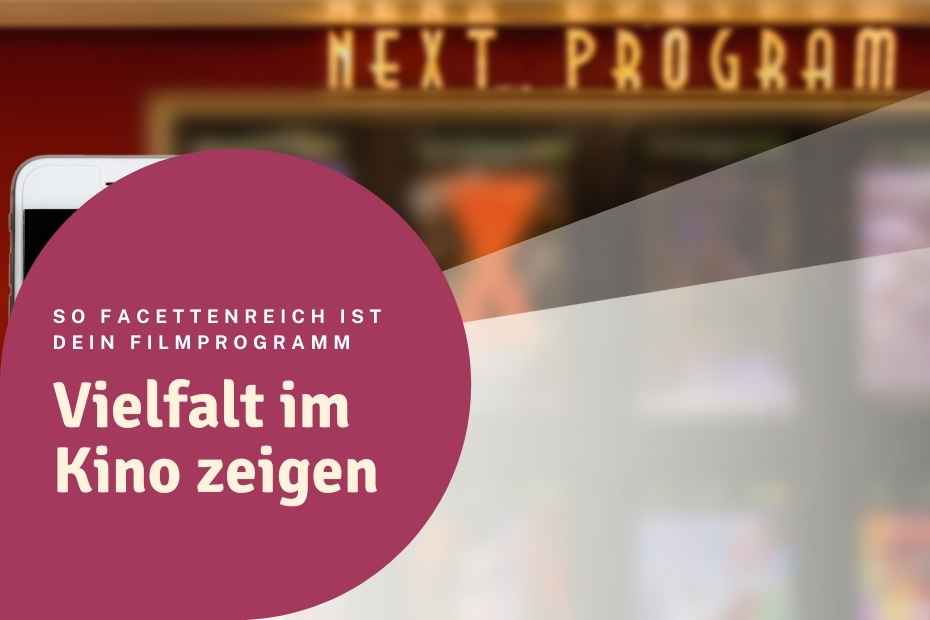Das ist ein Gastbeitrag von Natália Centková aus dem Kino Úsmev Košice, Slowakei. Wir freuen uns über diesen wichtigen Beitrag mit einem praxisnahen Beispiel aus einem europäischen Kino. Die Einleitung wurde ins Deutsche übersetzt, das Praxisbeispiel aus dem Kino ist im Original in Englisch zu lesen.
Integration von Randgruppen ist angesichts der Zunahme von Rassismus, Hassreden und Intoleranz in ganz Europa ein immer wichtigeres Thema. Es gibt viele Möglichkeiten, Stereotypen in unseren Gesellschaften zu bekämpfen und die Barrieren zu beseitigen, denen sich diese Gruppen gegenübersehen, wenn sie aktiv versuchen, am beruflichen, kulturellen und sozialen Leben teilzunehmen. Eines dieser Mittel sind kulturelle Aktivitäten.
Filme haben die einzigartige Fähigkeit, die Geschichten von Menschen am Rande der Gesellschaft einem breiten Publikum auf wirksame und lehrreiche Weise zu vermitteln. Daher ist es nicht nur wichtig, in den Kinos vielfältige Inhalte zu zeigen, sondern auch ein vielfältiges Publikum willkommen zu heißen.
In diesem Sinne hat das Kino Úsmev, ein Programmkino in Košice, Slowakei, im Jahr 2019 ein inklusives Programm für Menschen mit Behinderungen eingeführt. Es habe sich als unglaublich lohnende Erfahrung erwiesen, dank derer sie ihr Publikum, das die Einwohner unserer Stadt angemessener repräsentiert, aufbauen und weiter vergrößern konnten.
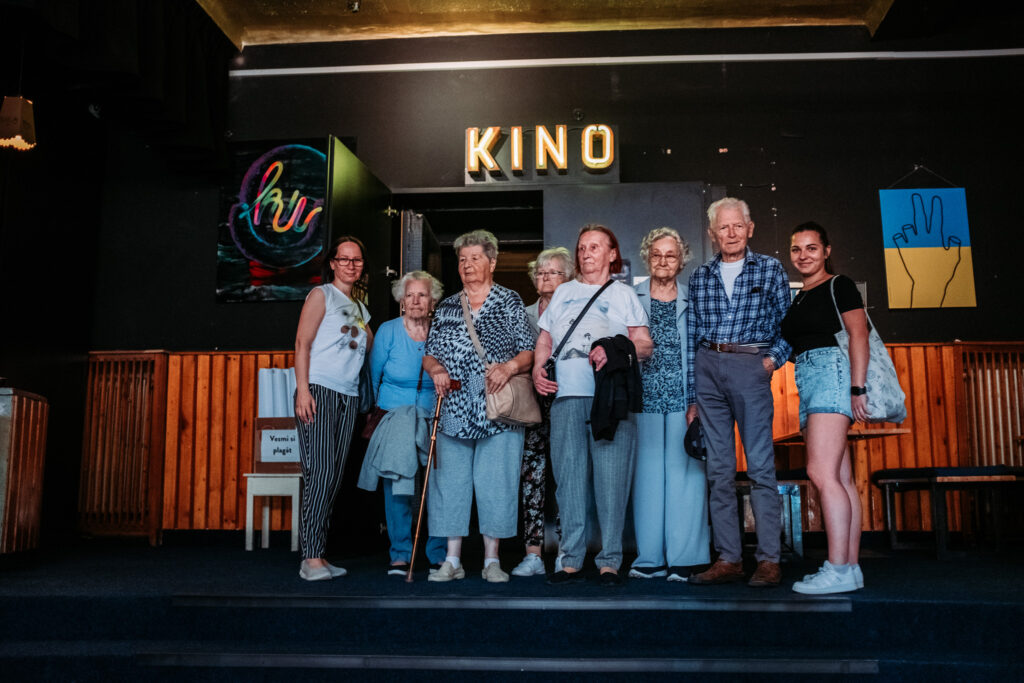
What is inclusion?
Inclusion is “the practice or policy of providing equal access to opportunities and resources for people who might otherwise be excluded or marginalized, such as those who have physical or intellectual disabilities and members of other minority groups.”
https://languages.oup.com/google-dictionary-en/
Concerning cinemas, inclusion means removing barriers the audience might face in programming, spaces and communication. As such, it is the responsibility of cinemas to identify barriers marginalized groups might face and find solutions to remove them in order to improve their accessibility. Otherwise, disabled people will continue to be excluded from experiencing cultural events.
Why is it important?
87 million Europeans, or 1 in 4 people living in Europe, have some form of disability. On the social level, engaging with them can lead to an improved quality of life. On the economic level, there are thousands of new potential audience members that you might reach by making adjustments to your programming, spaces and communication, which can be essential for the cinemas‘ survival in the future.
How to get started?
It can be overwhelming and scary to start working with a new audience with specific needs. To begin with, it is important first to survey your community and identify key groups you would like to work with. The next step would be establishing contact with organizations representing their interests, which can help you identify the concrete barriers and help remove them.
It’s essential to involve representatives and members of these groups in these processes, as the solution you might consider sufficient might not work in practice. It’s a long-term process of building trust, testing, and continuously finding the most appropriate ways of working with marginalized groups.
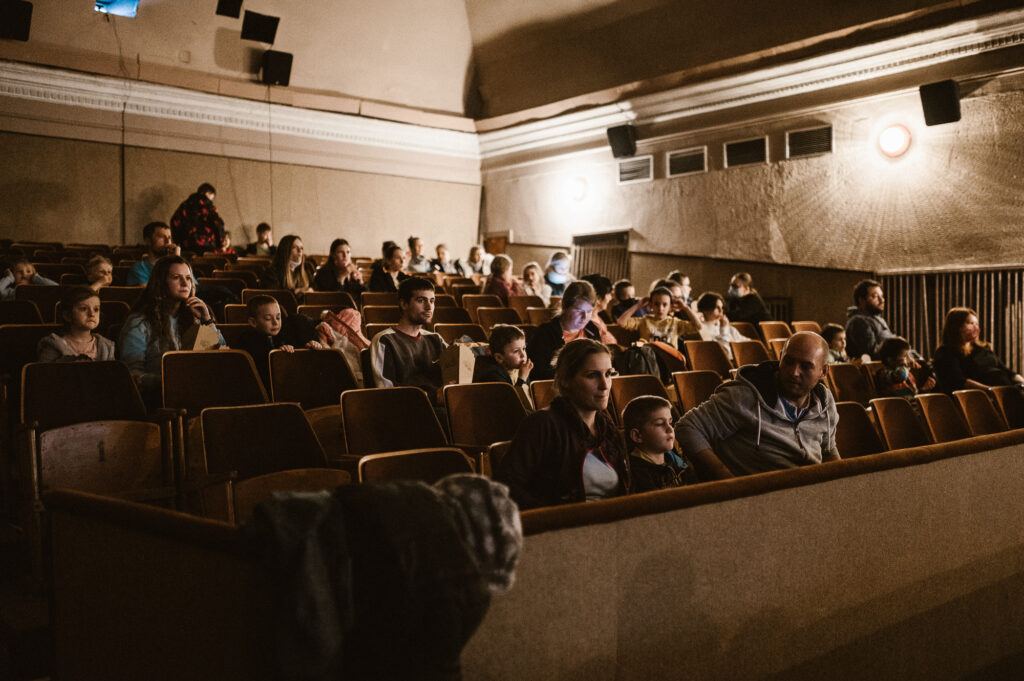
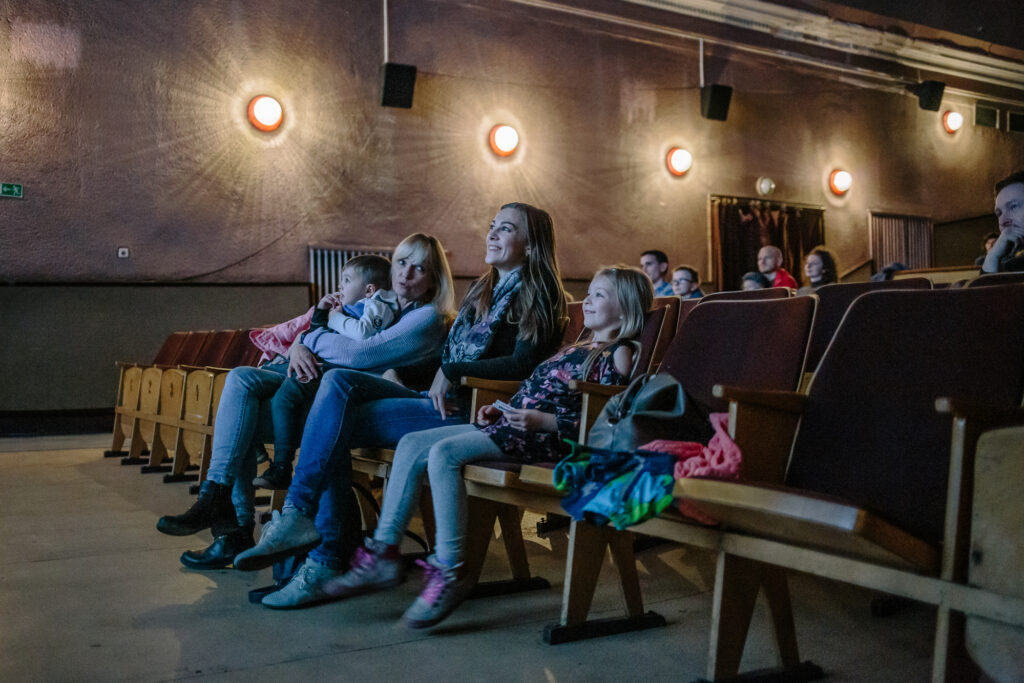
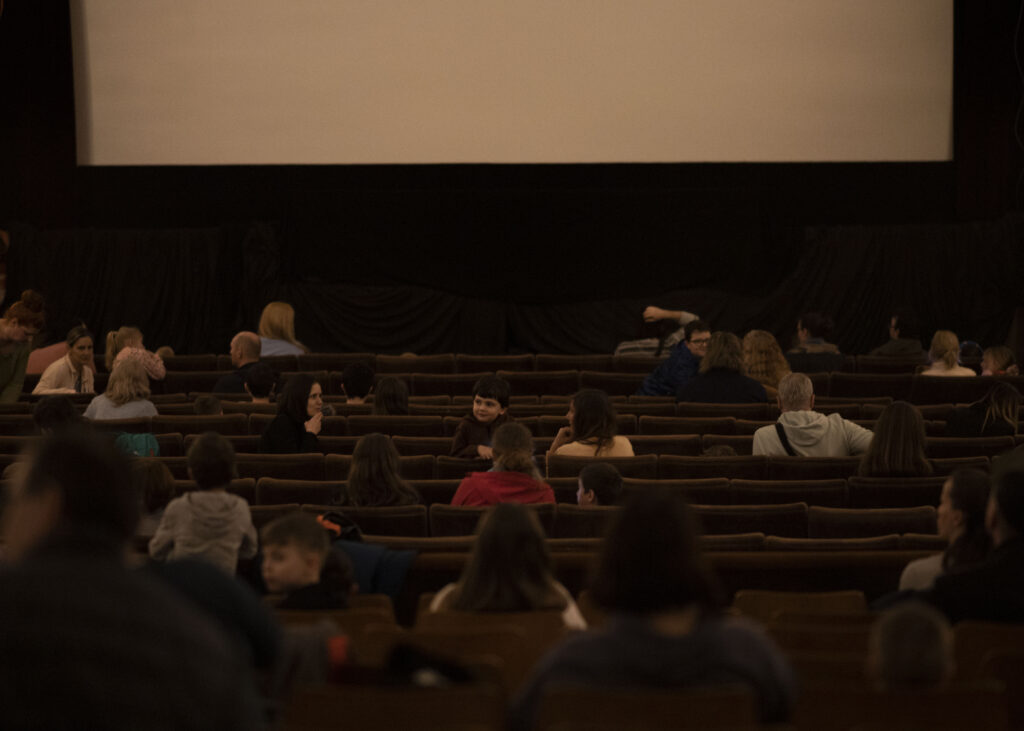
Autism-friendly screening at Kino Úsmev Košice
What adjustments are possible?
There are three main groups of barriers that cinemas should consider eliminating:
- space – physical barriers, e.g. steps, stairs, absence of railing, inaccessible toilets;
- communication – informational barriers, e.g. inaccessible website; lack of transparency;
- programming – inaccessible events, e.g. lack of subtitled or audio-described screenings.
Examples of accessible screenings
Audience with a neurodevelopmental disorder
- space – open doors to the cinema hall, the audience can move freely in the room, dimmed lights, lowered sound, provide a map of the space, no assigned seating;
- programming – films with no sudden changes, no trailers, regular screenings at the same time, start on time;
- communication – clearly marked screenings, trained staff.
Audience with a sight loss
- space – remove or at least transparently inform about physical obstacles, headphones for audio description, reflective tapes on steps;
- programming – dialogue-heavy films, audio-description, early afternoon screening times;
- communication – information provided in Braille, trained staff, accessible website according to the Web Content Accessibility Guidelines (WCAG).
Audience with a hearing loss
- space – tablets with simultaneous subtitling, induction loop installed in the screening hall;
- programming – subtitled screenings, regular screenings at the same time, no trailers;
- communication – trained staff that can use at least basic sign language, and videos with subtitles promoting screenings on social media.
Audience with a cognitive impairment
- space – dimmed lights, lowered sound, covered mirrors;
- programming – films with sentimental value, musicals, and older films, break in the middle of the screening for the audience to refresh;
- communication – trained staff ready to assist.
There are, of course, just some examples of marginalized groups you can work with. We would suggest starting with some small adjustments and adding more groups as you proceed with improving your accessibility. If you need any help or tips, please feel free to contact us!
Contact details
Natália Centková, natalia@kinousmev.sk
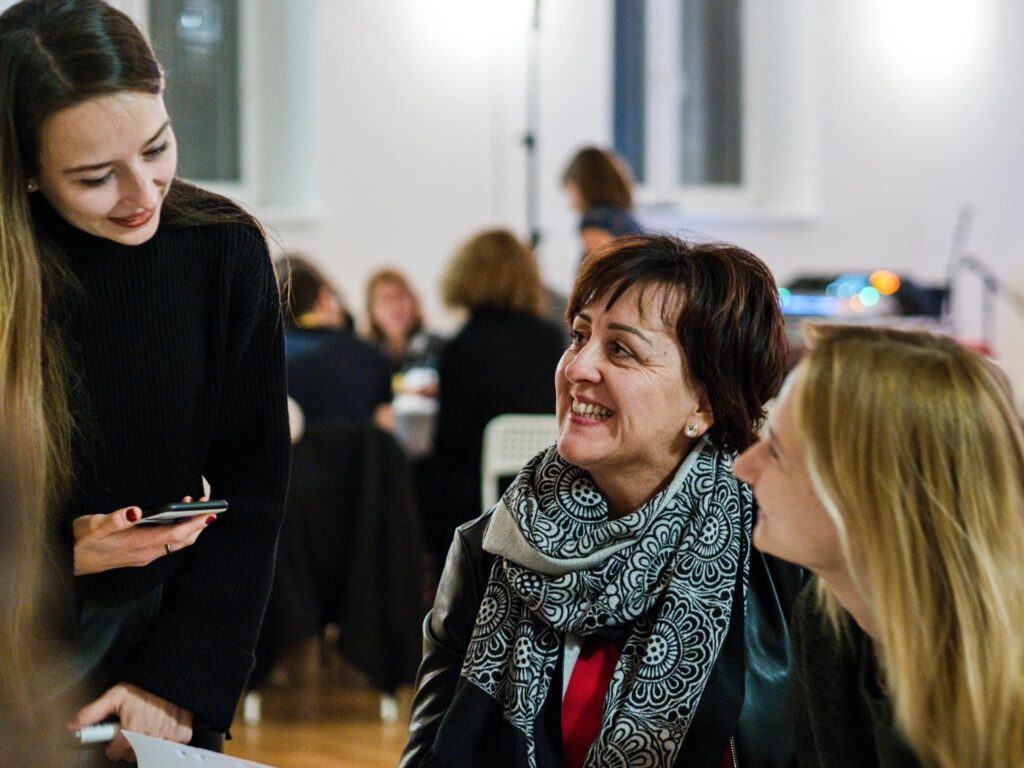
Autorin des Beitrag ist Natália Centková aus dem Kino Úsmev Košice, Slowakei.

